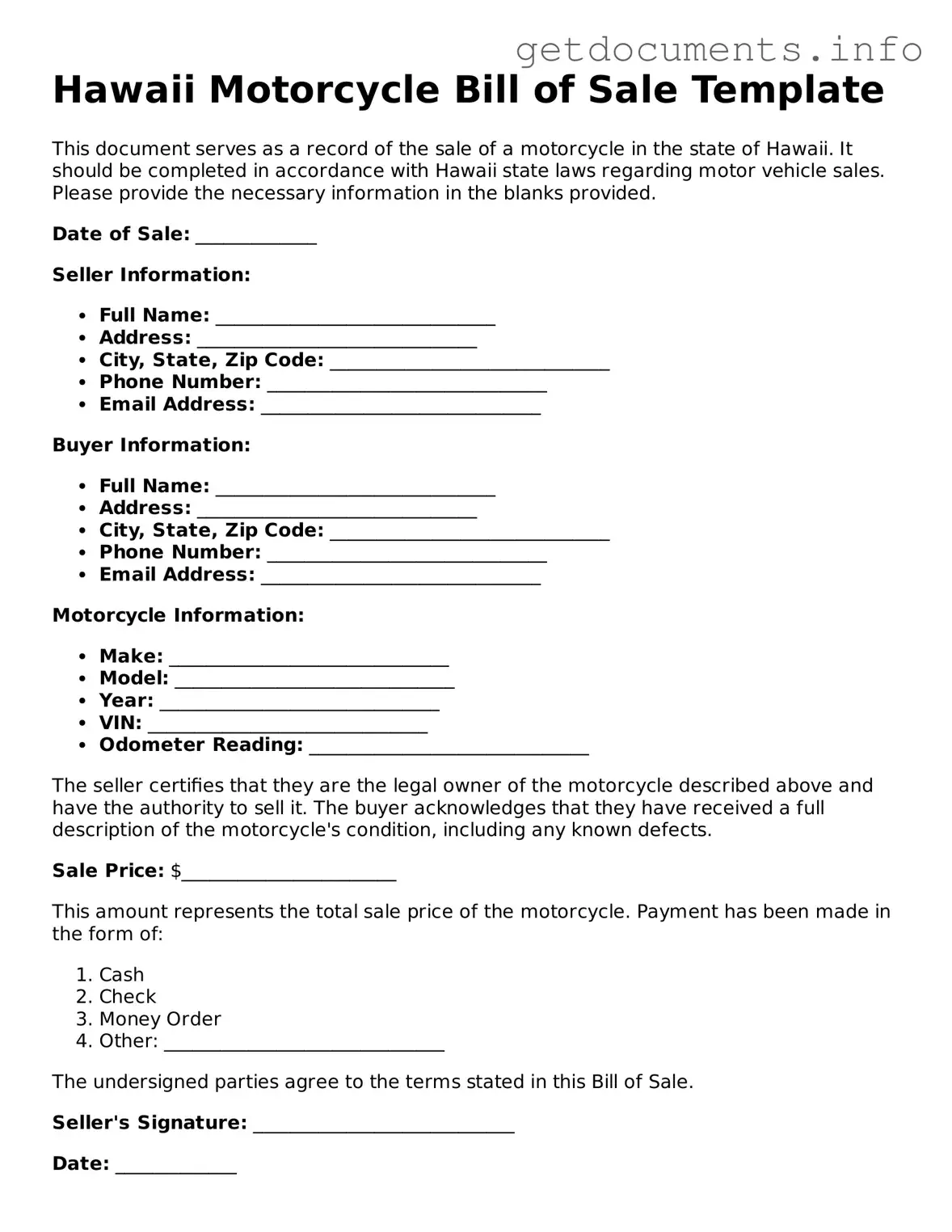Free Motorcycle Bill of Sale Template for Hawaii
The Hawaii Motorcycle Bill of Sale is a legal document that records the transfer of ownership for a motorcycle in Hawaii. This form is essential for both buyers and sellers, as it provides proof of the transaction and helps protect the rights of both parties. Understanding how to properly fill out this form is crucial for a smooth transfer, so be sure to complete it by clicking the button below.
Access Motorcycle Bill of Sale Editor
